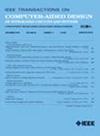基于异构操作单元的基于reram的PIM加速器的高效DNN推理
IF 2.9
3区 计算机科学
Q2 COMPUTER SCIENCE, HARDWARE & ARCHITECTURE
IEEE Transactions on Computer-Aided Design of Integrated Circuits and Systems
Pub Date : 2024-12-09
DOI:10.1109/TCAD.2024.3514778
引用次数: 0
摘要
基于操作单元(OU)的配置可以为深度神经网络(DNN)推理设计节能可靠的基于ReRAM跨栏的内存处理(PIM)架构。为了利用稀疏性并处理交叉栏的非理想性,矩阵向量乘法(matrix-vector-multiplication, MVM)操作在比完整交叉栏(称为ou)小得多的粒度级别上进行计算。然而,为给定的DNN工作负载确定合适的OU大小是一个不小的挑战,因为DNN层表现出不同级别的稀疏性,并且对总体预测精度有不同的影响。在本文中,我们提出了一个设计异构的基于ou的PIM加速器的框架。OU配置根据神经层的特性和PIM器件由于重复推理运行而产生的时变电导漂移而变化。总的来说,我们的实验结果表明,与最先进的基于同构ou的体系结构相比,稀疏感知的基于分层的异构ou的PIM计算在不影响预测准确性的情况下,平均分别减少了34%和73%的延迟和能量。本文章由计算机程序翻译,如有差异,请以英文原文为准。
Energy-Efficient DNN Inferencing on ReRAM-Based PIM Accelerators Using Heterogeneous Operation Units
Operation unit (OU)-based configurations enable the design of energy-efficient and reliable ReRAM crossbar-based processing-in-memory (PIM) architectures for deep neural network (DNN) inferencing. To exploit sparsity and tackle crossbar nonidealities, matrix-vector-multiplication (MVM) operations are computed at a much smaller level of granularity than a full crossbar, referred to as OUs. However, determining the suitable OU size for a given DNN workload presents a nontrivial challenge as the DNN layers exhibit different levels of sparsity and have varying impact on overall predictive accuracy. In this article, we propose a framework for designing heterogeneous OU-based PIM accelerators. The OU configurations vary based on the characteristics of the neural layers and the time-dependent conductance drift of PIM devices due to repeated inference runs. Overall, our experimental results demonstrate that the sparsity-aware layer-wise heterogeneous OU-based PIM computation reduces latency and energy by 34% and 73% on average, respectively, compared to state-of-the-art homogeneous OU-based architectures without compromising the predictive accuracy.
求助全文
通过发布文献求助,成功后即可免费获取论文全文。
去求助
来源期刊
CiteScore
5.60
自引率
13.80%
发文量
500
审稿时长
7 months
期刊介绍:
The purpose of this Transactions is to publish papers of interest to individuals in the area of computer-aided design of integrated circuits and systems composed of analog, digital, mixed-signal, optical, or microwave components. The aids include methods, models, algorithms, and man-machine interfaces for system-level, physical and logical design including: planning, synthesis, partitioning, modeling, simulation, layout, verification, testing, hardware-software co-design and documentation of integrated circuit and system designs of all complexities. Design tools and techniques for evaluating and designing integrated circuits and systems for metrics such as performance, power, reliability, testability, and security are a focus.

 求助内容:
求助内容: 应助结果提醒方式:
应助结果提醒方式:


